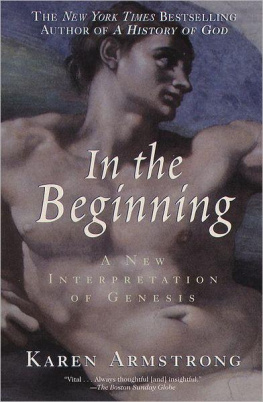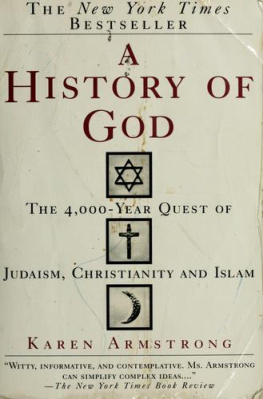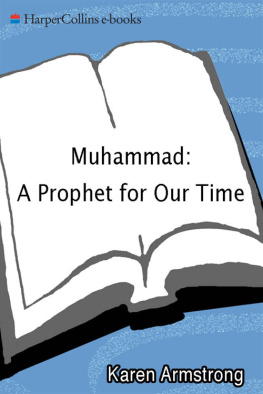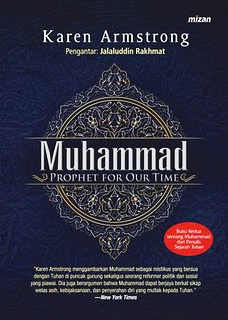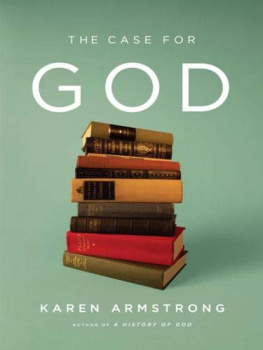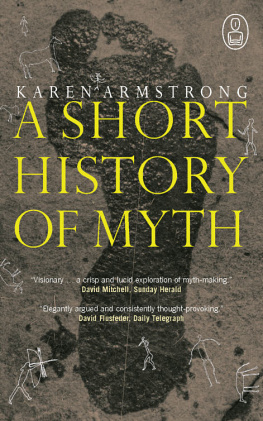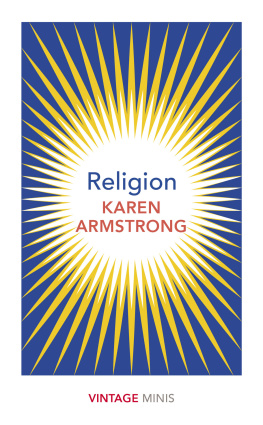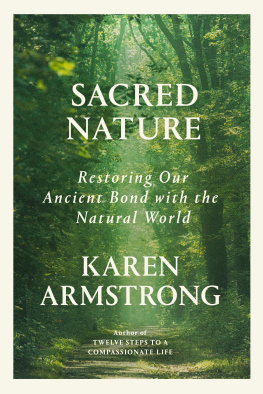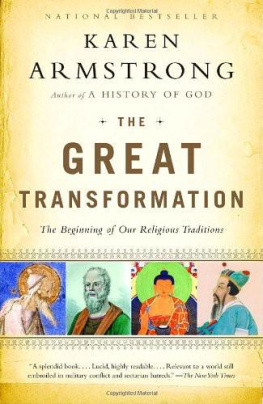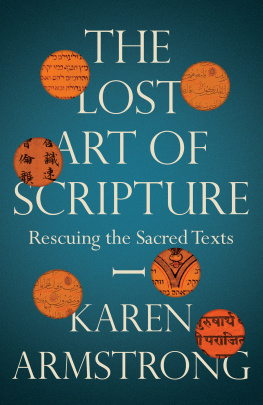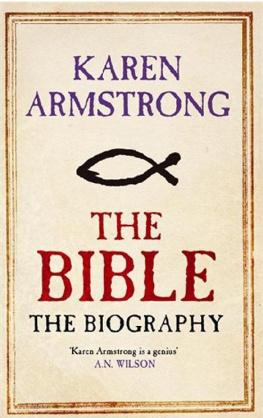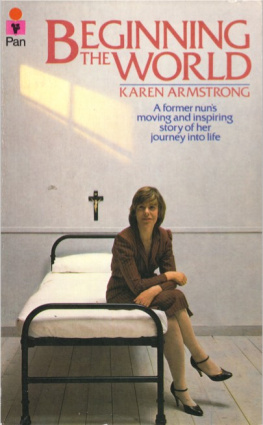Karen Armstrong - The Great Transformation: The Beginning of Our Religious Traditions
Here you can read online Karen Armstrong - The Great Transformation: The Beginning of Our Religious Traditions full text of the book (entire story) in english for free. Download pdf and epub, get meaning, cover and reviews about this ebook. year: 2006, publisher: Knopf, genre: Religion. Description of the work, (preface) as well as reviews are available. Best literature library LitArk.com created for fans of good reading and offers a wide selection of genres:
Romance novel
Science fiction
Adventure
Detective
Science
History
Home and family
Prose
Art
Politics
Computer
Non-fiction
Religion
Business
Children
Humor
Choose a favorite category and find really read worthwhile books. Enjoy immersion in the world of imagination, feel the emotions of the characters or learn something new for yourself, make an fascinating discovery.

- Book:The Great Transformation: The Beginning of Our Religious Traditions
- Author:
- Publisher:Knopf
- Genre:
- Year:2006
- Rating:5 / 5
- Favourites:Add to favourites
- Your mark:
- 100
- 1
- 2
- 3
- 4
- 5
The Great Transformation: The Beginning of Our Religious Traditions: summary, description and annotation
We offer to read an annotation, description, summary or preface (depends on what the author of the book "The Great Transformation: The Beginning of Our Religious Traditions" wrote himself). If you haven't found the necessary information about the book — write in the comments, we will try to find it.
The Great Transformation: The Beginning of Our Religious Traditions — read online for free the complete book (whole text) full work
Below is the text of the book, divided by pages. System saving the place of the last page read, allows you to conveniently read the book "The Great Transformation: The Beginning of Our Religious Traditions" online for free, without having to search again every time where you left off. Put a bookmark, and you can go to the page where you finished reading at any time.
Font size:
Interval:
Bookmark:
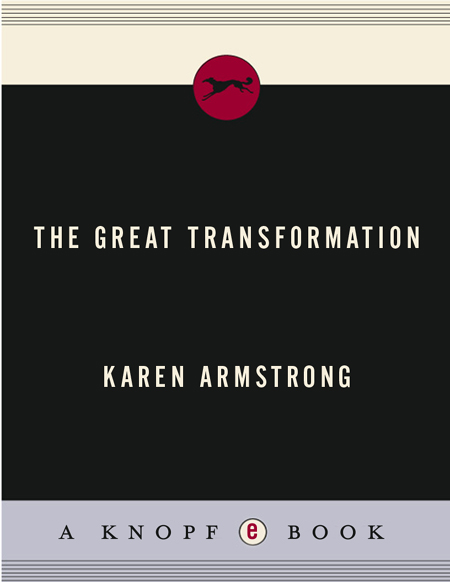
THE GREAT
TRANSFORMATION
The Beginning of
Our Religious Traditions
KAREN ARMSTRONG

ALFRED A. KNOPF
New York / Toronto 2006
Contents
| THE AXIAL PEOPLES (c. 1600 to 900 bce) |
| RITUAL (c. 900 to 800 bce) |
| KENOSIS (c. 800 to 700 bce) |
| KNOWLEDGE (c. 700 to 600 bce) |
| SUFFERING (c. 600 to 530 bce) |
| EMPATHY (c. 530 to 450 bce) |
| CONCERN FOR EVERYBODY (c. 450 to 398 bce) |
| ALL IS ONE (c. 400 to 300 BCE) |
| EMPIRE (c. 300 to 220 BCE) |
| THE WAY FORWARD |
Acknowledgments
My thanks, as always, to my literary agents Felicity Bryan, Peter Ginsberg, and Andrew Nurnberg; and to my editors Jane Garrett, Robbert Ammerlaan, and Toby Mundy, who had the idea for this book. Their continued support and friendship has been a source of immense blessing and joy. I must also thank Michele Topham, Carole Robinson, and Jackie Head in Felicity Bryans office for their constancy, patience, and kindness in helping me through the daily vicissitudes of a writers life, and Emily Molanphy and Alice Hunt, assistants to Jane and Toby, who are such thoughtful intermediaries. As ever, I owe a great debt of gratitude to the production team at Knopf, whose passion for accuracy and elegance is quite indispensable: Chuck Antony (copyeditor), Patrice Silverstein and Chuck Thompson (proofreaders), Claire Bradley Ong (production), Anthea Lingeman (designer), David Lindroth (mapmaker), and Ellen Feldman (production editor). And even though their input is still to come at this writing, I can-not forget my friends in the publicity departments, Sheila Kaye, Francien Schuursma, and Sheila OShea, who I know will promote the book with their usual dedication and generosity. Finally, I could not have completed this book without the love and practical support of my cousin, Jenny Wayman.
But this book is dedicated to Mitchell and Geraldine Bray, who understand the meaning of compassion, with my sincere and heartfelt gratitude.
Maps and Plans
Aryan Migrations c. 1500 to 1000 BCE: The Land of the Seven Rivers
Aryan Expansion to the East c. 1000 to 500 BCE
The Vedic Sacrificial Arena
Shang China c. 1600 to 1045 BCE
China Under the Early Zhou, 11th Century to 9th Century BCE
Early Israel and the Surrounding Countries c. 1200 BCE
Mycenaean Greece c. 1450 to 1200 BCE
Family Trees of the Greek Gods: The Offspring of Gaia and the Offspring of Chaos
The Kingdoms of Israel and Judah c. 1000 to 722 BCE
The Assyrian Empire, 744 to 612 BCE
The Greek City-States
Family Tree of the Olympian Gods
The Principalities and Peripheral Kingdoms of China During the Early Spring and Autumn Period
The Land of the Arya c. 1000 BCE
The Chinese Principalities and States During the Late Spring and Autumn Period
Jerusalem and Judah After 722 BCE
The Babylonian Empire, 626 to 539 BCE
The Persian Empire
Judea During the Persian Period
The Eastern Ganges Region from the 6th Century BCE
The Seven Warring States of China c. 485 to 221 BCE
The Seleucid, Ptolemaic, and Mauryan Empires
The Qin Empire
The Han Empire
The Religions of the Axial Age Today: World Population
Introduction
Perhaps every generation believes that it has reached a turning point of history, but our problems seem particularly intractable and our future increasingly uncertain. Many of our difficulties mask a deeper spiritual crisis. During the twentieth century, we saw the eruption of violence on an unprecedented scale. Sadly, our ability to harm and mutilate one another has kept pace with our extraordinary economic and scientific progress. We seem to lack the wisdom to hold our aggression in check and keep it within safe and appropriate bounds. The explosion of the first atomic bombs over Hiroshima and Nagasaki laid bare the nihilistic self-destruction at the heart of the brilliant achievements of our modern culture. We risk environmental catastrophe because we no longer see the earth as holy but regard it simply as a resource. Unless there is some kind of spiritual revolution that can keep abreast of our technological genius, it is unlikely that we will save our planet. A purely rational education will not suffice. We have found to our cost that a great university can exist in the same vicinity as a concentration camp. Auschwitz, Rwanda, Bosnia, and the destruction of the World Trade Center were all dark epiphanies that revealed what can happen when the sense of the sacred inviolability of every single human being has been lost.
Religion, which is supposed to help us to cultivate this attitude, often seems to reflect the violence and desperation of our times. Almost every day we see examples of religiously motivated terrorism, hatred, and intolerance. An increasing number of people find traditional religious doctrines and practices irrelevant and incredible, and turn to art, music, literature, dance, sport, or drugs to give them the transcendent experience that humans seem to require. We all look for moments of ecstasy and rapture, when we inhabit our humanity more fully than usual and feel deeply touched within and lifted momentarily beyond ourselves. We are meaning-seeking creatures and, unlike other animals, fall very easily into despair if we cannot find significance and value in our lives. Some are looking for new ways of being religious. Since the late 1970s there has been a spiritual revival in many parts of the world, and the militant piety that we often call fundamentalism is only one manifestation of our postmodern search for enlightenment.
In our current predicament, I believe that we can find inspiration in the period that the German philosopher Karl Jaspers called the Axial Age because it was pivotal to the spiritual development of humanity. From about 900 to 200 BCE, in four distinct regions, the great world traditions that have continued to nourish humanity came into being: Confucianism and Daoism in China; Hinduism and Buddhism in India; monotheism in Israel; and philosophical rationalism in Greece. This was the period of the Buddha, Socrates, Confucius, and Jeremiah, the mystics of the Upanishads, Mencius, and Euripides. During this period of intense creativity, spiritual and philosophical geniuses pioneered an entirely new kind of human experience. Many of them worked anonymously, but others became luminaries who can still fill us with emotion because they show us what a human being should be. The Axial Age was one of the most seminal periods of intellectual, psychological, philosophical, and religious change in recorded history; there would be nothing comparable until the Great Western Transformation, which created our own scientific and technological modernity.
But how can the sages of the Axial Age, who lived in such different circumstances, speak to our current condition? Why should we look to Confucius or the Buddha for help? Surely a study of this distant period can only be an exercise in spiritual archaeology, when what we need is to create a more innovative faith that reflects the realities of our own world. Yet, in fact, we have never surpassed the insights of the Axial Age. In times of spiritual and social crisis, men and women have constantly turned back to this period for guidance. They may have interpreted the Axial discoveries differently, but they have never succeeded in going beyond them. Rabbinic Judaism, Christianity, and Islam, for example, were all latter-day flowerings of the original Axial Age. As we shall see in the last chapter of this book, these three traditions all rediscovered the Axial vision and translated it marvelously into an idiom that spoke directly to the circumstances of their time.
Next pageFont size:
Interval:
Bookmark:
Similar books «The Great Transformation: The Beginning of Our Religious Traditions»
Look at similar books to The Great Transformation: The Beginning of Our Religious Traditions. We have selected literature similar in name and meaning in the hope of providing readers with more options to find new, interesting, not yet read works.
Discussion, reviews of the book The Great Transformation: The Beginning of Our Religious Traditions and just readers' own opinions. Leave your comments, write what you think about the work, its meaning or the main characters. Specify what exactly you liked and what you didn't like, and why you think so.

